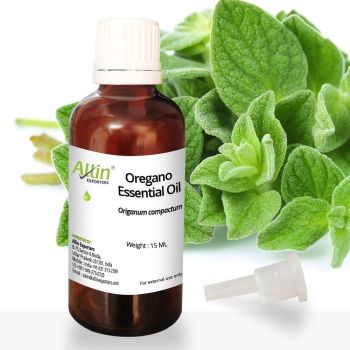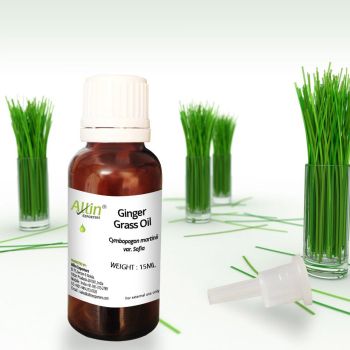Turmeric Essential Oil

Get In Touch With Us
The botanical name of turmeric is Curcuma longa and is popularly known as Indian Saffron. Turmeric essential oil is used for wide variety of purposes including its extraordinary use in aromatherapy, pharmaceutical, flavoring, industrial usage, cosmetics and toiletries. It is native to India and is valued much for its extraordinary properties hence, it is used in the manufacture of medicines that are of very high quality and are the medicines which can be used without having any kind of side effect.
All across the world, turmeric essential oil is regarded as the best antiseptic and with ever-changing pace; it has achieved widespread use especially in nourishing and fostering skin. Aside from this, it is one of the dominating spices around the world.
It is a perennial plant that can grow up to the height of approximately 1 meter. Turmeric essential oil has roots about two feet long and is deep orange in color from inside. Because of its brilliant yellow color, it is called Indian saffron. Its aroma is warm, woody, earthy, spicy and the color varies from yellow to yellow green. It appears as a thin liquid, which make it easy to use and apply.
| Botanical Name | Curcuma longa. |
|---|---|
| Origin | In India, Turmeric was originated about 2500 years ago. From India, it then reached to China and Africa. |
| Method of Extraction & Part of Plant Used | By steam distillation method, this oil is extracted from the roots of Curcuma longa. |
| Properties |
Turmeric essential oil is soluble in alcohol and insoluble in water.
|
| Aroma | It has spicy,woody and fresh aroma. |
| Integrants | The main components of this oil are limonene, Curcumin, ketone, zingiberine,phellandrene, ar-turmerone, 1,8-cineole, B-turmerone and a-turmerone. |
| Therapeutic Properties | Turmeric essential oil has excellent antiseptic and healing properties. Furthermore, it is applied on the wound to prevent infection. Due to its anti inflammatory properties, it is widely used for treating internal and external inflammations. |
| Blends Well With | Turmeric oil blends well with various oils such as cistus, clary sage, ylang ylang, ginger, cananga, violet leaf, galangal and labdanum oil. |
| Precautions |
It is toxic in nature and has shown irritating effects.
|
We found other products you might like!
-
![Cashew Nut Oil]() Cashew Nut OilAs low as MRP. Rs 257.00 MRP. Rs 325.00
Cashew Nut OilAs low as MRP. Rs 257.00 MRP. Rs 325.00 -
![6 In 1 Aroma Diffuser Oil Pack]() 6 In 1 Aroma Diffuser Oil PackAs low as MRP. Rs 645.00 MRP. Rs 716.67
6 In 1 Aroma Diffuser Oil PackAs low as MRP. Rs 645.00 MRP. Rs 716.67 -
![USB Based Compact 3 in 1 Aroma Diffuser Car Humidifier – 50 ml]() USB Based Compact 3 in 1 Aroma Diffuser Car Humidifier – 50 mlSpecial Price Rs 1,389.00 MRP. Rs 2,185.00
USB Based Compact 3 in 1 Aroma Diffuser Car Humidifier – 50 mlSpecial Price Rs 1,389.00 MRP. Rs 2,185.00 -
![Lotus White Absolute Oil]() Lotus White Absolute OilAs low as MRP. Rs 446.00 MRP. Rs 563.00
Lotus White Absolute OilAs low as MRP. Rs 446.00 MRP. Rs 563.00 -
![Juhi Attar]() Juhi AttarAs low as MRP. Rs 462.00 MRP. Rs 584.00
Juhi AttarAs low as MRP. Rs 462.00 MRP. Rs 584.00 -
![Oregano Essential Oil]() Oregano Essential OilAs low as MRP. Rs 311.00 MRP. Rs 393.00
Oregano Essential OilAs low as MRP. Rs 311.00 MRP. Rs 393.00 -
![Apricot Oil]() Apricot OilAs low as MRP. Rs 209.00 MRP. Rs 264.00
Apricot OilAs low as MRP. Rs 209.00 MRP. Rs 264.00 -
![Ginger Grass Oil]() Ginger Grass OilAs low as MRP. Rs 323.00 MRP. Rs 408.00
Ginger Grass OilAs low as MRP. Rs 323.00 MRP. Rs 408.00 -
![Coconut Oil]() Coconut OilAs low as MRP. Rs 195.00 MRP. Rs 246.00
Coconut OilAs low as MRP. Rs 195.00 MRP. Rs 246.00 -
![2 in 1 Cool Mist Ultrasonic Aroma Diffuser and air Humidifier (1513) - 300 ML]() 2 in 1 Cool Mist Ultrasonic Aroma Diffuser and air Humidifier (1513) - 300 MLSpecial Price Rs 2,099.00 MRP. Rs 2,309.00
2 in 1 Cool Mist Ultrasonic Aroma Diffuser and air Humidifier (1513) - 300 MLSpecial Price Rs 2,099.00 MRP. Rs 2,309.00
















